Submitted by WA Contents
Sports facility by MoDusArchitects makes a bold statement with lighting tower in Bozen, Italy
Italy Architecture News - Jan 30, 2023 - 18:40 3593 views
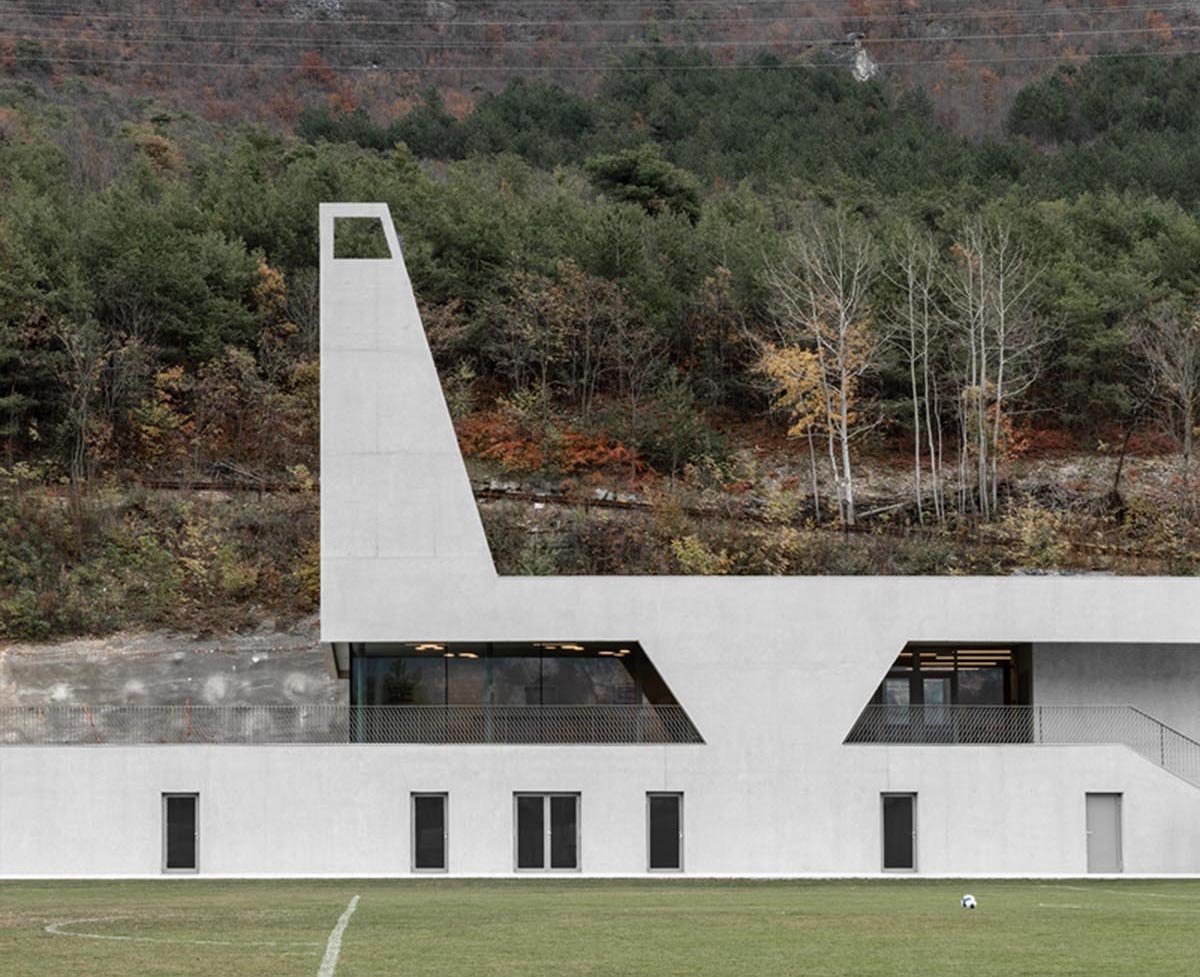
A new sports facility designed by Italian architecture practice MoDusArchitects makes a bold statement with its 11-metres high lighting tower in Bozen, Italy.
The project, named Fieldhouse, is a replacement of an old building with a new sports facility with an extension that aimed to improve the building's energy efficiency while reusing the existing photovoltaic system.
Located in the small town of Laghetti of Egna Municipality, Bolzano nearby the riverbanks of the Adige river, the building is situated at the foothills of Mount Corno whose natural reserve park forms a dramatic backdrop to the sports facility.
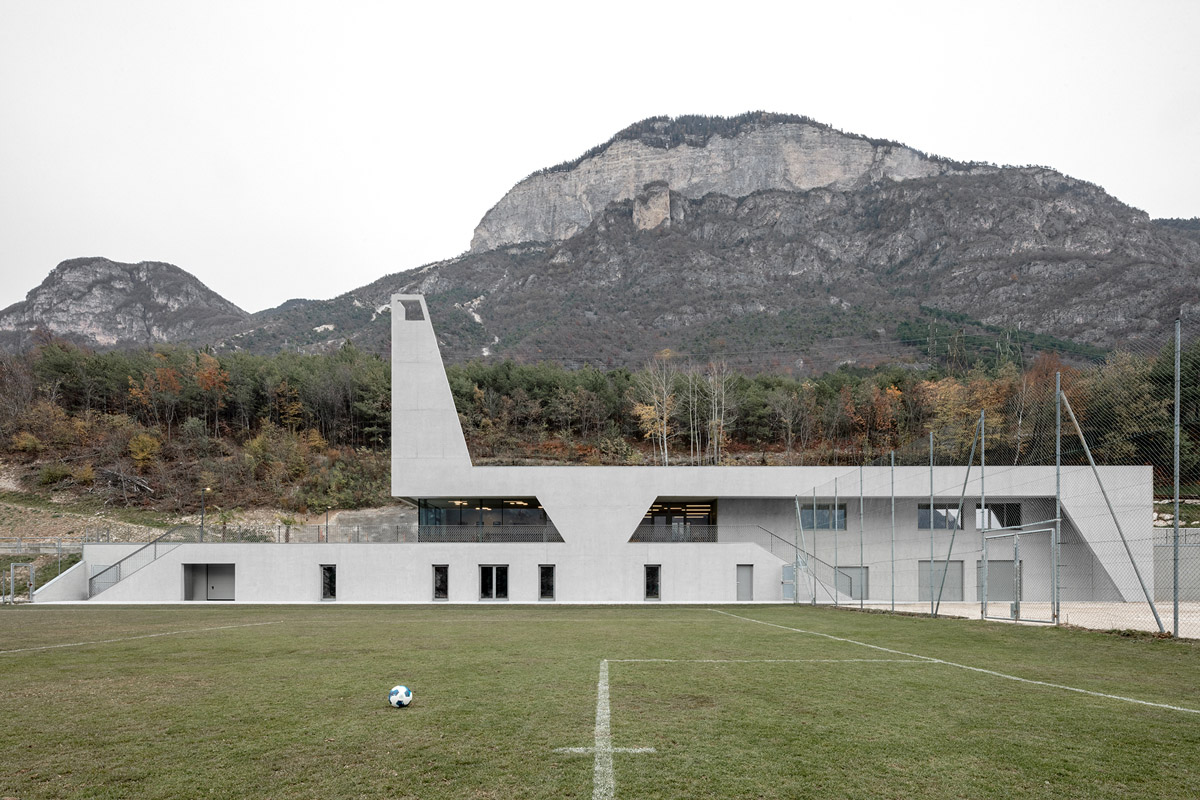
The project brief called MoDusArchitects to demolish the old building that housed the changing rooms and the sports association and design a new sports center that could be part of the landscape.
The building, encompassing a total of 1,080-square-metre area, presents "an infrastructural character" with its low-lying body that moves peoples' eyes horizontally along the site.
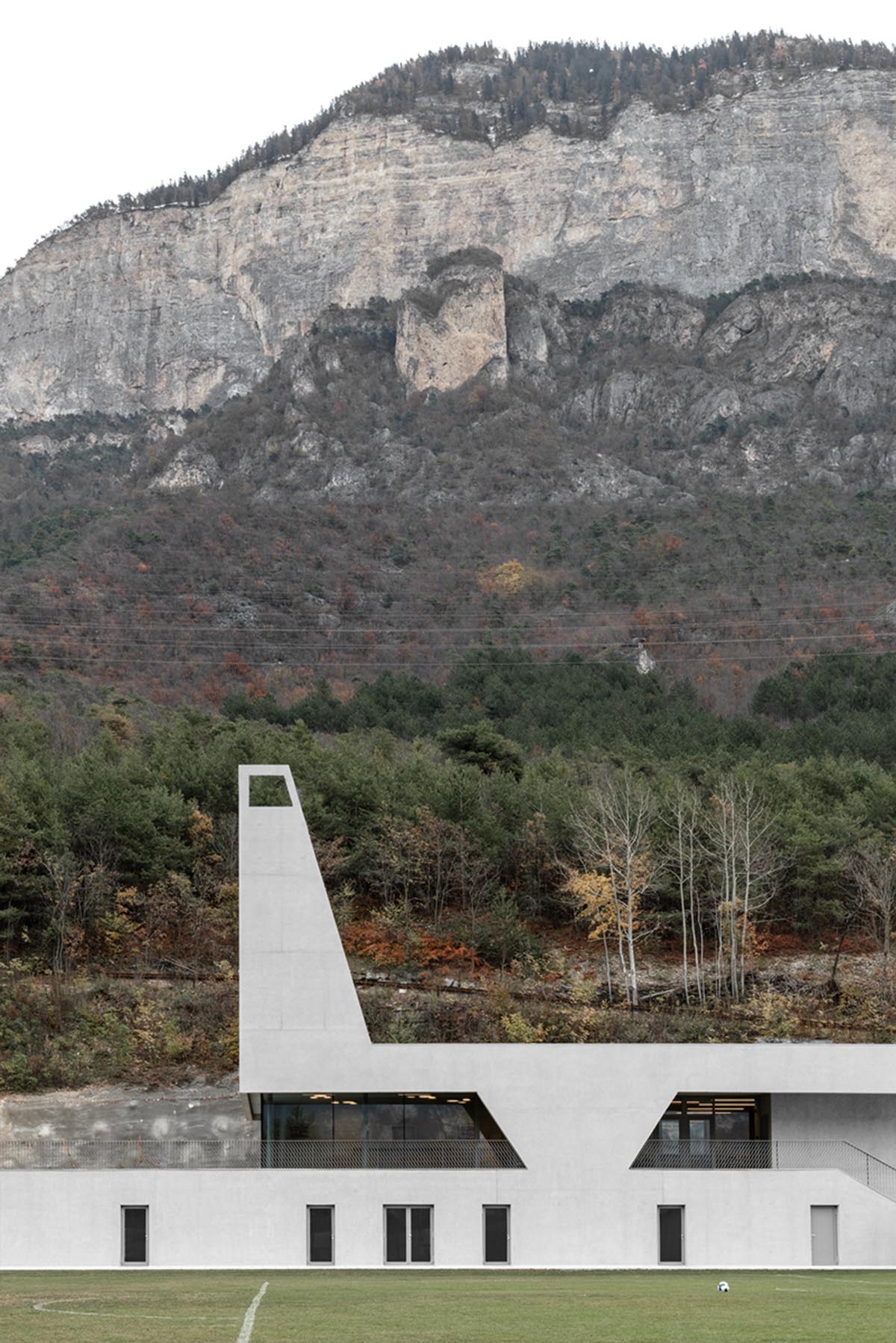
Fieldhouse is wedged between a five-a-side football pitch to the north, the existing football field to the west and the steeping terrain to the east.
Fieldhouse is derived from a retaining wall to a long linear roof, while becoming a raised groundscape in its own scale. The sports facility "acts not only as a viewing platform for sporting events, but also as an outdoor venue for social occasions."
"Be it football pitch, tennis courts, or baseball diamonds, outdoor recreational fields are precisely constructed landscapes: their shape, size, edges, and orientation on the site are regimented by the rules of the game that they host," said Matteo Scagnol, co-founder of MoDusArchitects.
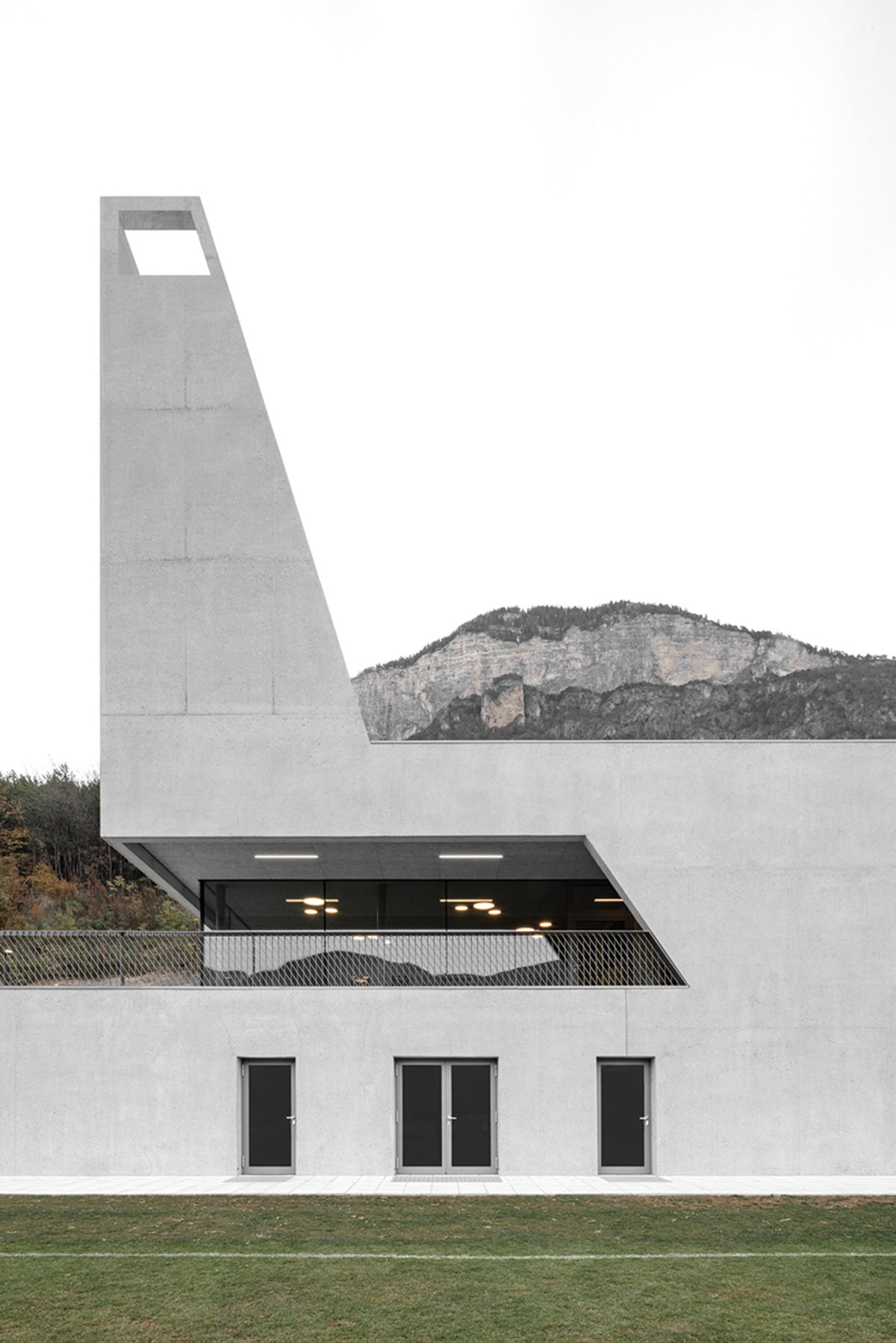
According to the studio, in many ways the project acts as "a connector piece, part of the larger puzzle of small-town settlements that line the valley basins of South Tyrol."
The area consists of residential neighbourhoods, light-industrial zones and sports infrastructures sit side-by-side in limited swathes of land, said the studio.
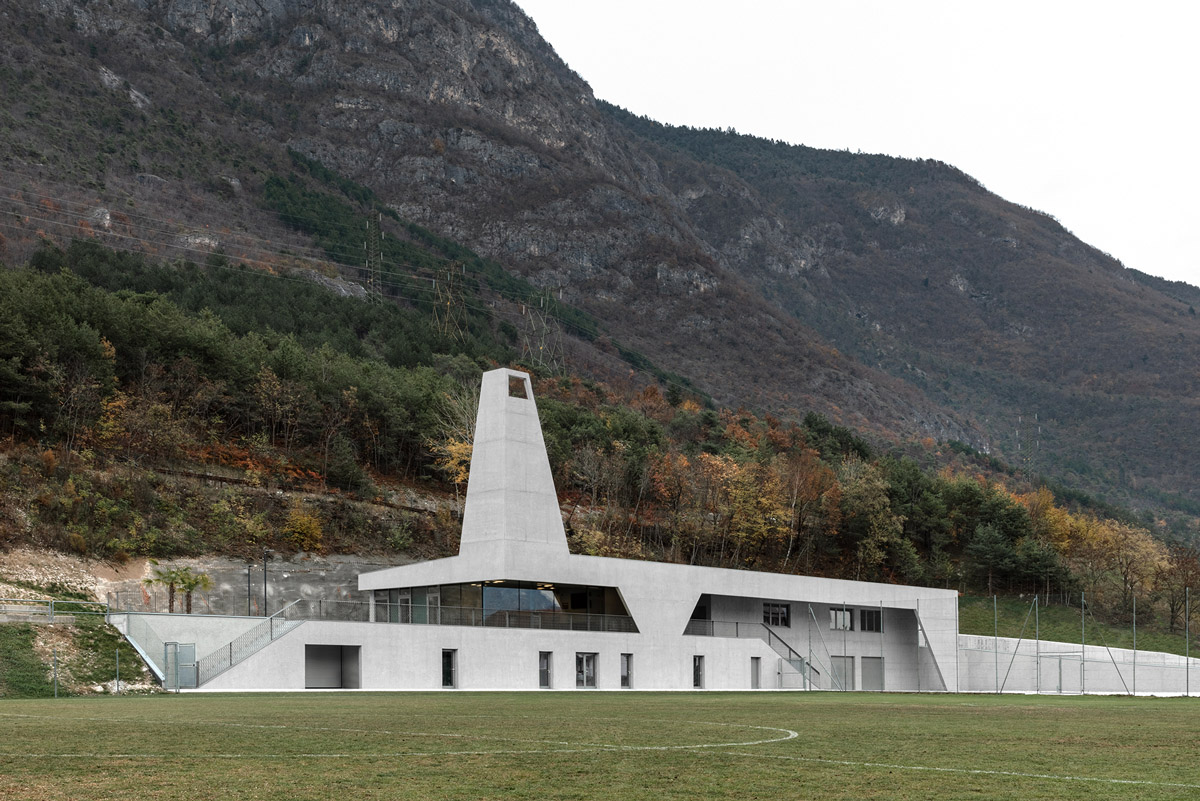
Positioned at the point of inflection between valley and mountain, the design language of Fieldhouse is characterized by a regular and elongated plan.
On the other hand, it is also drawing a bold geometrical profile in elevation that measures itself up against the vertical landscape.
"In section, Fieldhouse mediates the topography with two levels that connect up the various programs and vista points," the studio continued.
Described as "a new community hub dedicated to sports", the building was also designed to host recreational activities.
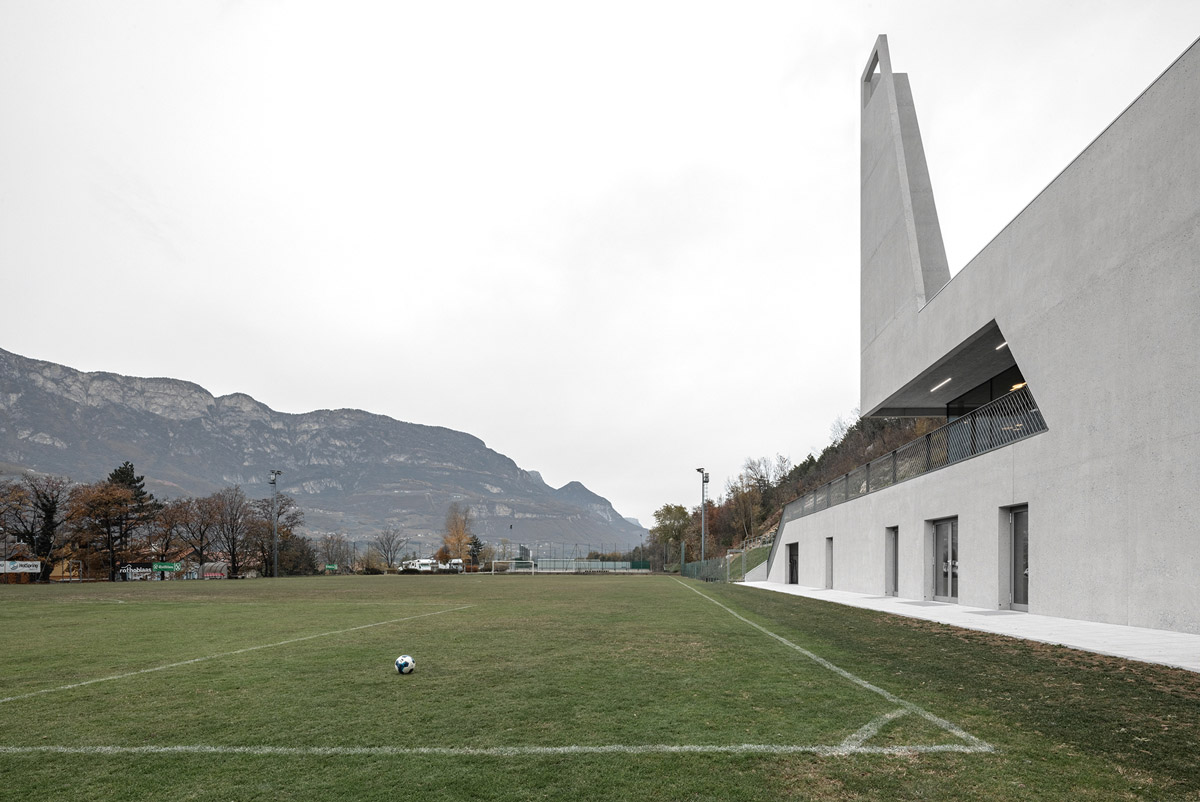
"We wanted to give the community a project that was accessible and would grant full visibility to all the activities of the functional programme, especially those aimed at the public and spectators," said Sandy Attia, co-founder of MoDusArchitects.
"This sparked the decision to position the volume longitudinally, to accompany visitors in the enjoyment of their leisure time, thereby creating a new social space," added Attia.
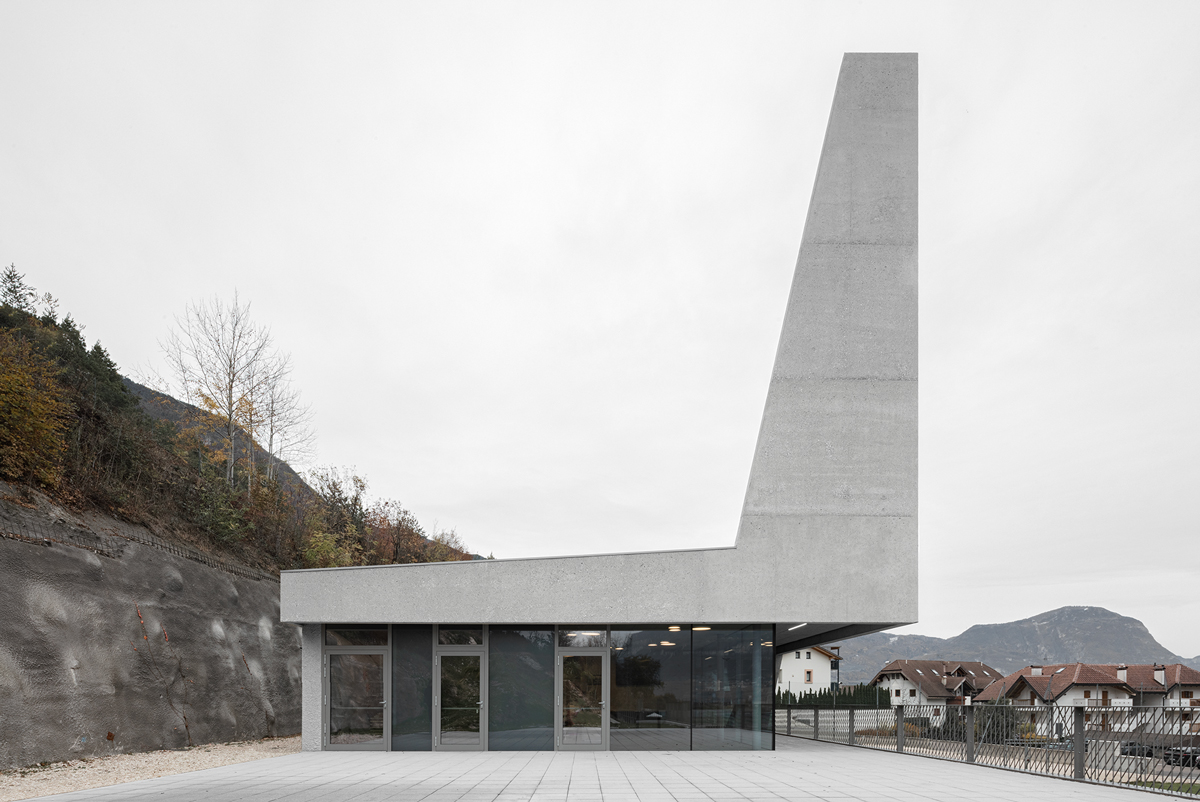
Reaching up two levels, the building's one part is partially arranged underground, while the other is above ground with an adjoining large terrace. The building is made of reinforced - exposed concrete cast in situ.
On the façade, the studio adds the glazed apertures, taking cues from the geometries and slopes of the site. Its uniform envelope is punctuated by alternating trapezoidal pillars and sharp cuts at the openings.
A 11-metres high lighting tower is designed on the east side, while tapering upwards. The tower acts as a counterweight to the extended body of the Fieldhouse.
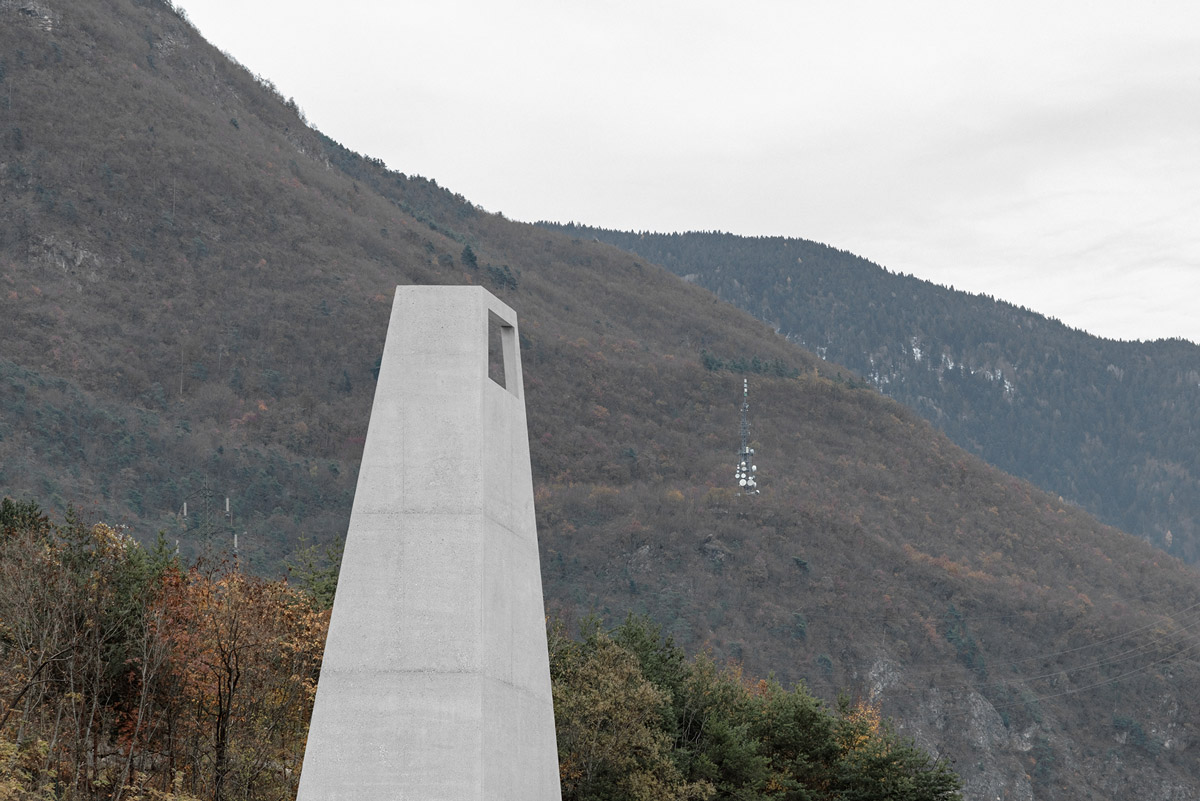
The studio incorporates the requisite lighting poles into an architectural element that delineates the outermost corner of the building—a hinge between built volume and the ground—to become a visual marker in the landscape.
The tower becomes an integral part of the roofscape whose long, flat roof houses the 52 photovoltaic modules. Thanks to a system that covers 50 per cent of its energy consumption with renewable sources, the new building is CasaClima A certified.
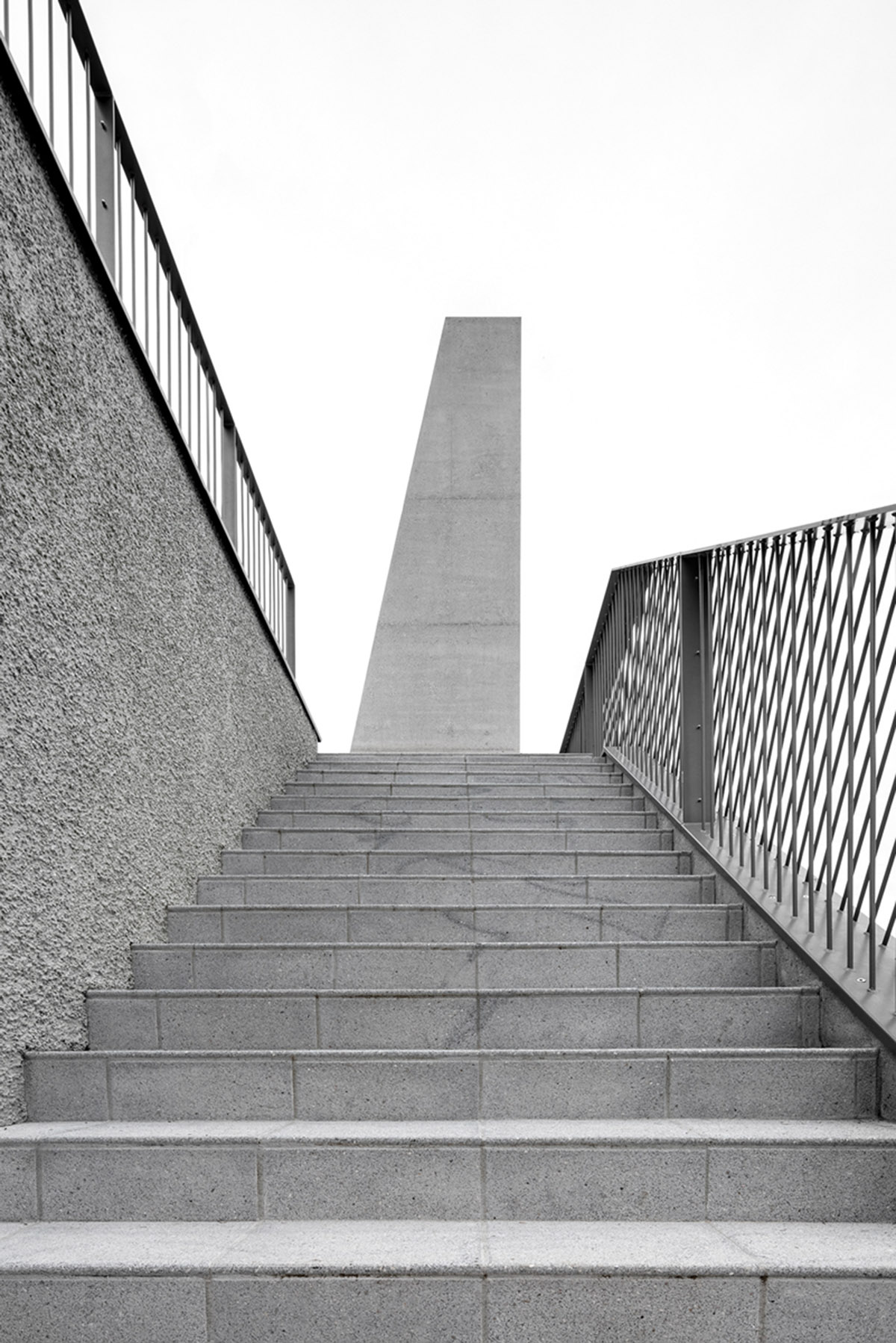
From the entrance forecourt, a wide panoramic covered staircase leads to the first floor which hosts the caretaker's apartment, offices, a meeting and teaching room, the cafeteria area and kitchen with indoor and outdoor dining areas, and a large terrace for parties and public meetings.
New changing rooms with showers and toilets for 30 players are arranged on the ground floor, with a direct connection to both the football pitch and the inside of the building.
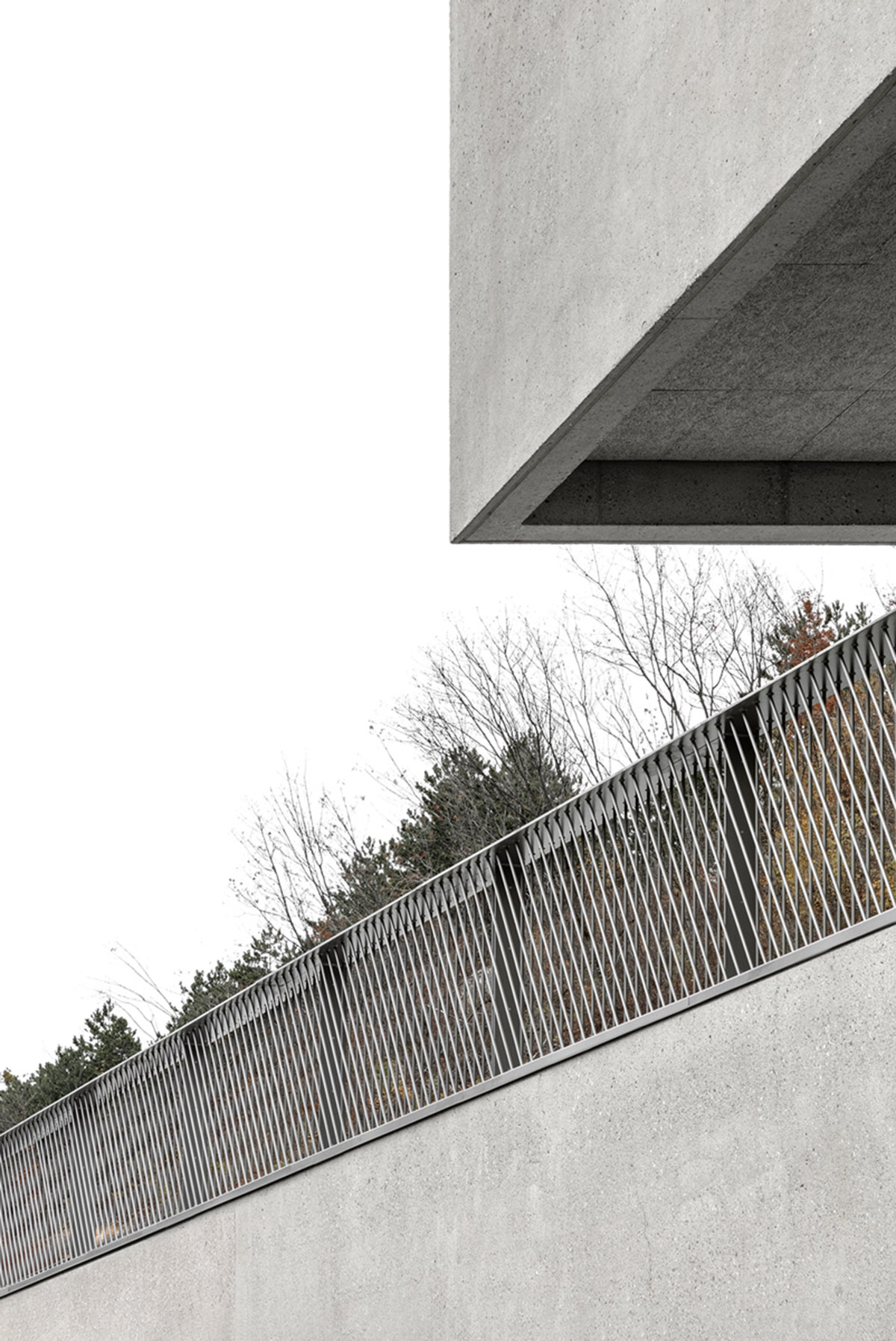
Here in addition to the storage facilities for the sports equipment is located the independently operated, local division of the Tiroler Schützen with a small indoor shooting range and dedicated storage area.
The association is rooted in the local culture of South Tyrol and once constituted the former voluntary army.
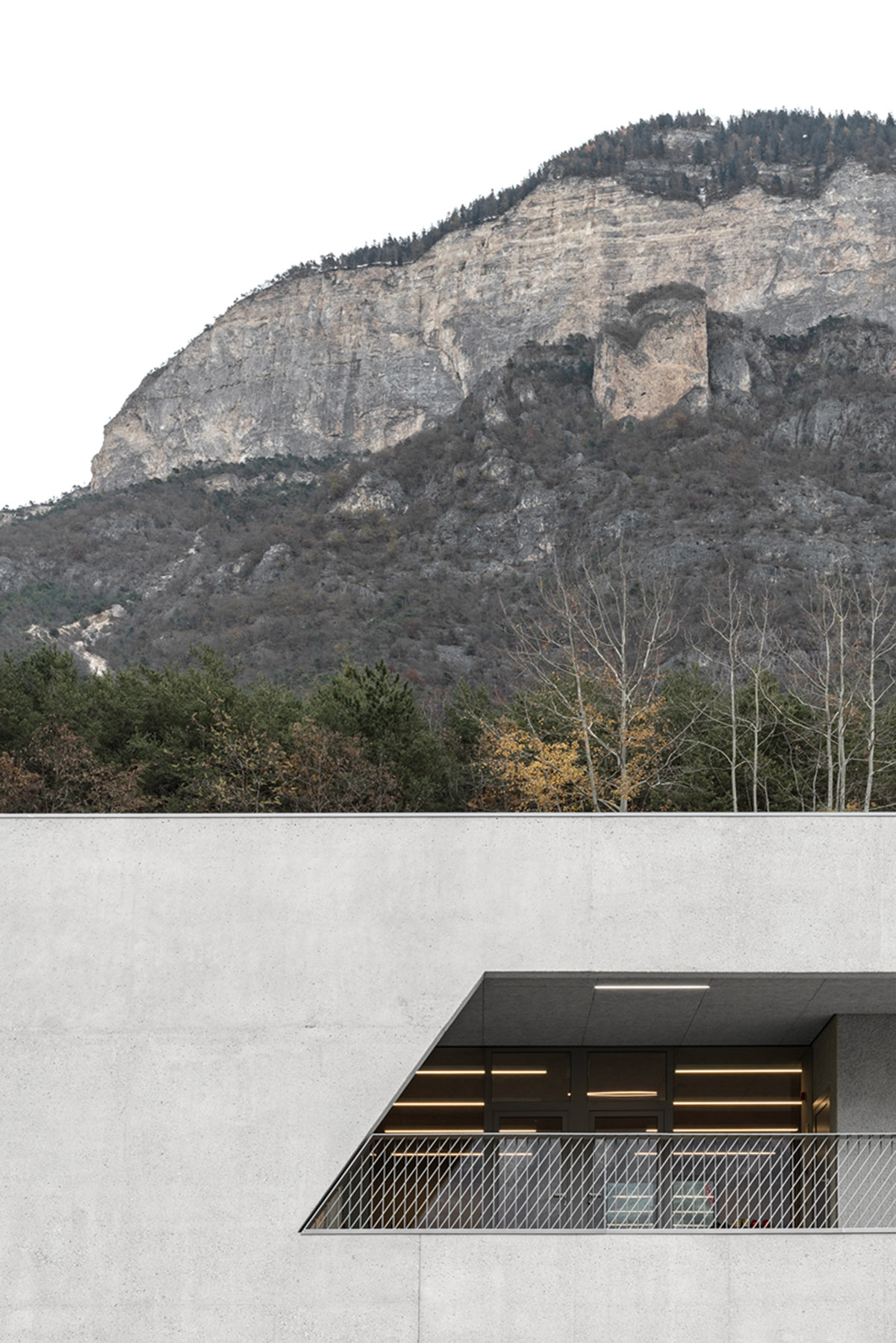
MoDusArchitects' project reflects on the architecture of local sports facilities and their public character, tracing the outlines of a typology little explored on the Italian scene.
The relevance of the Fieldhouse for the local community elevates the functional nature of the sports field and generates an inclusive space where sports-centred services merge with recreational spaces that the entire local community can enjoy.
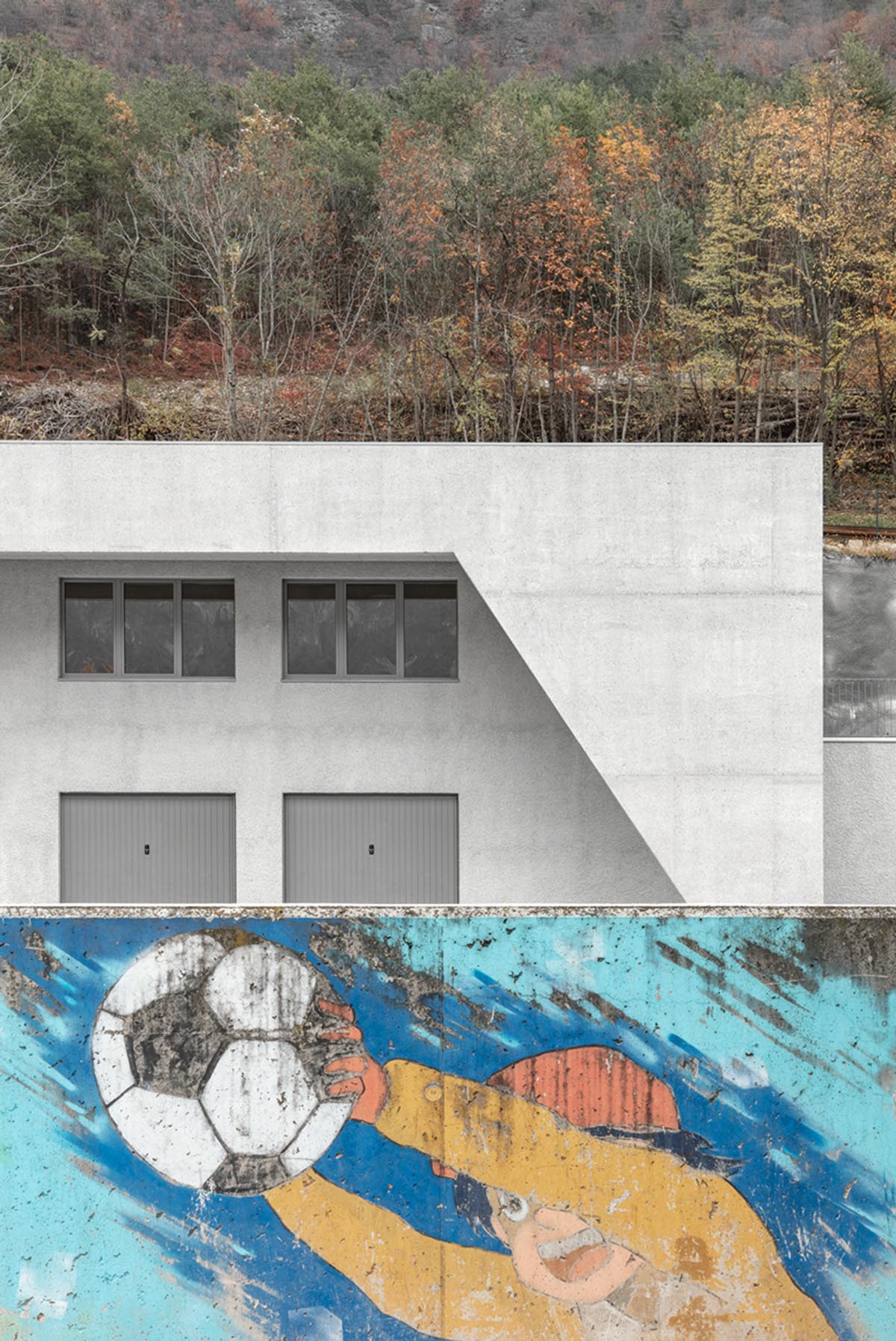
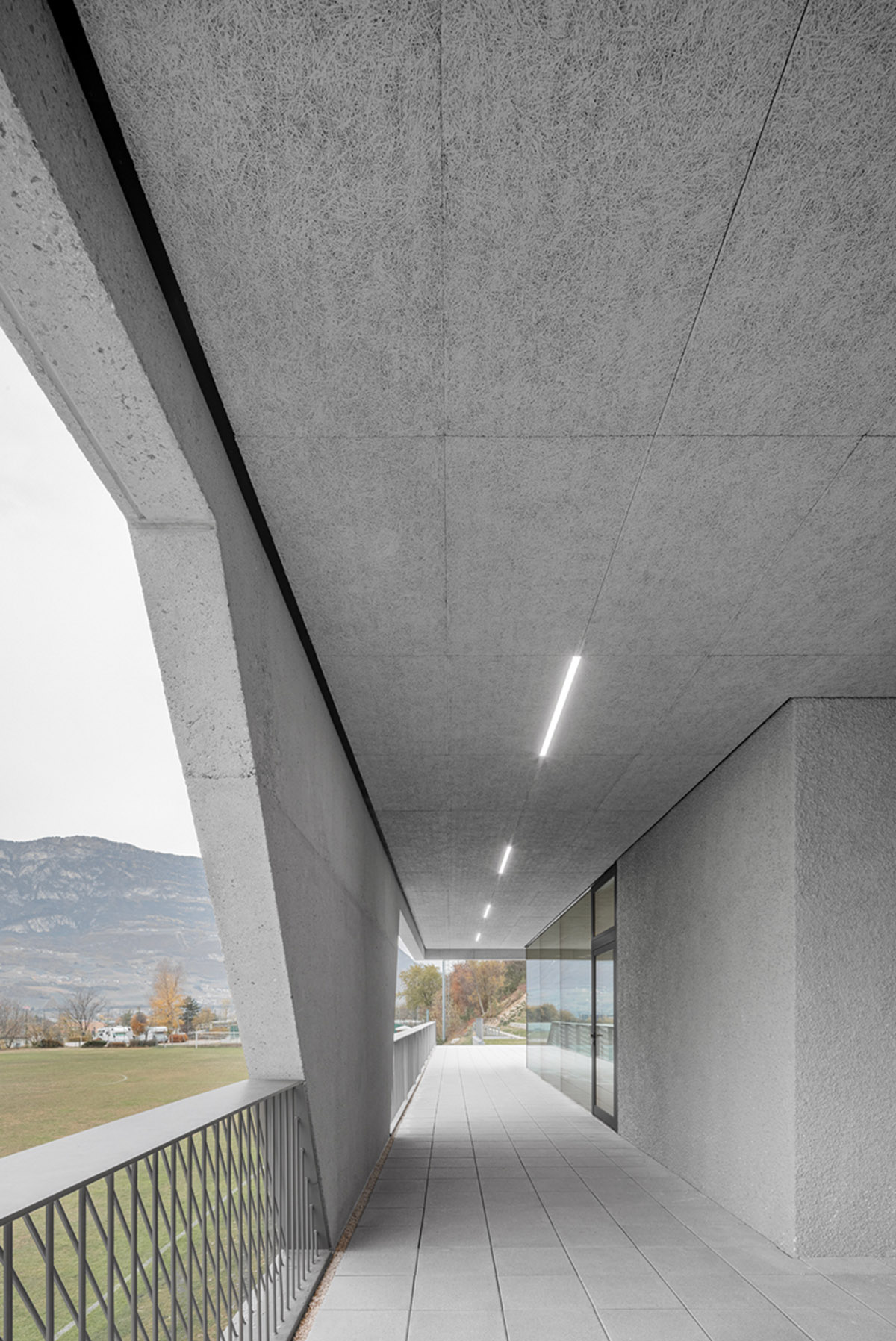
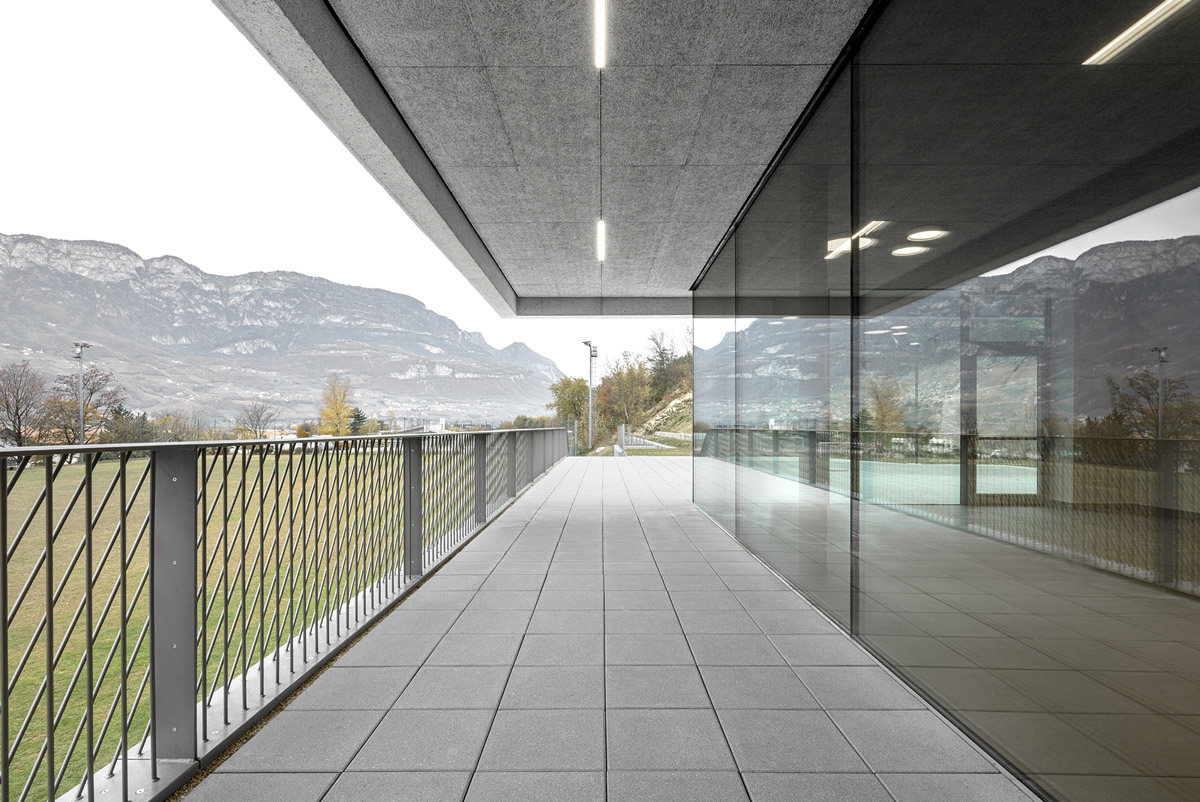
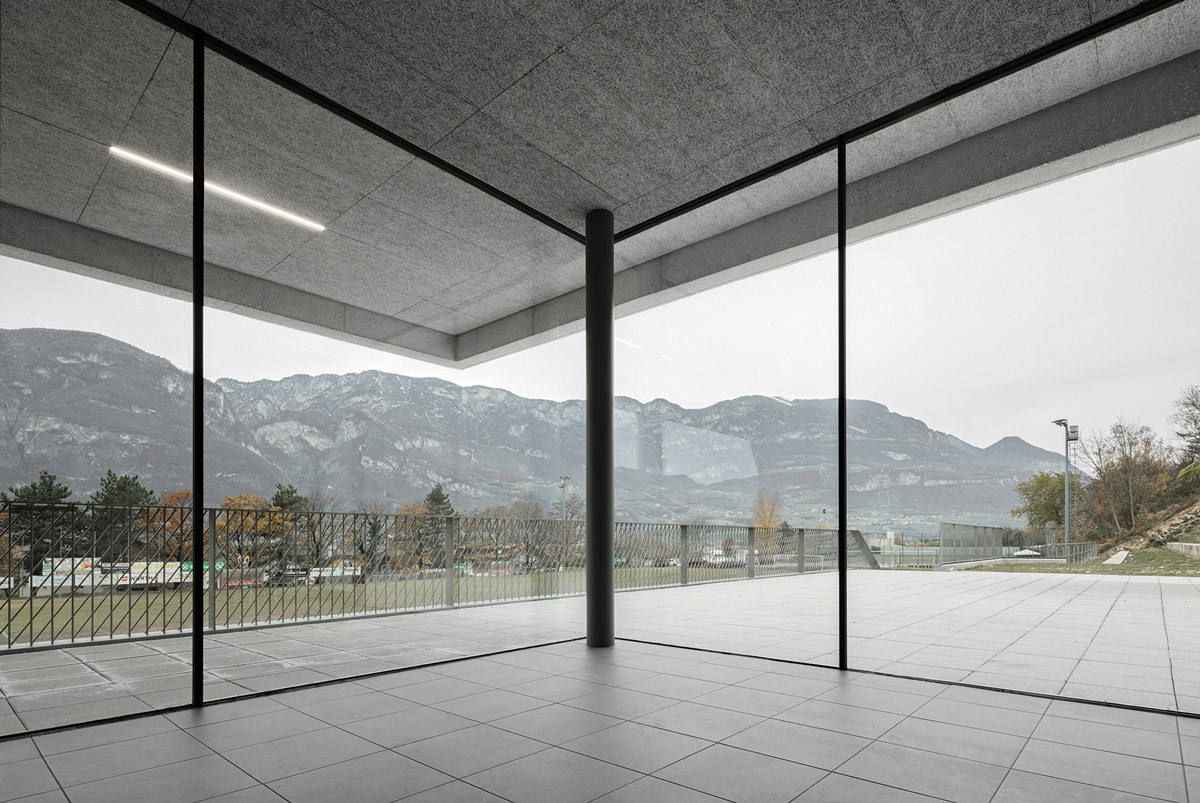
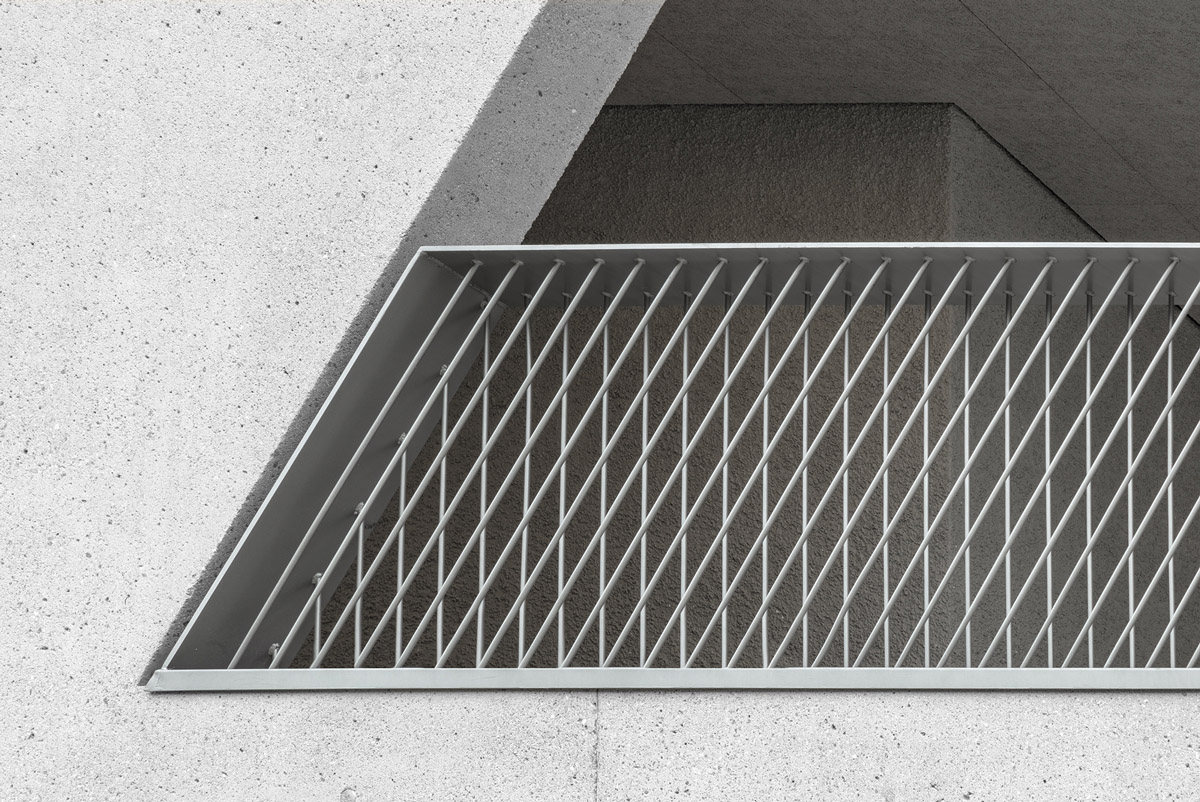
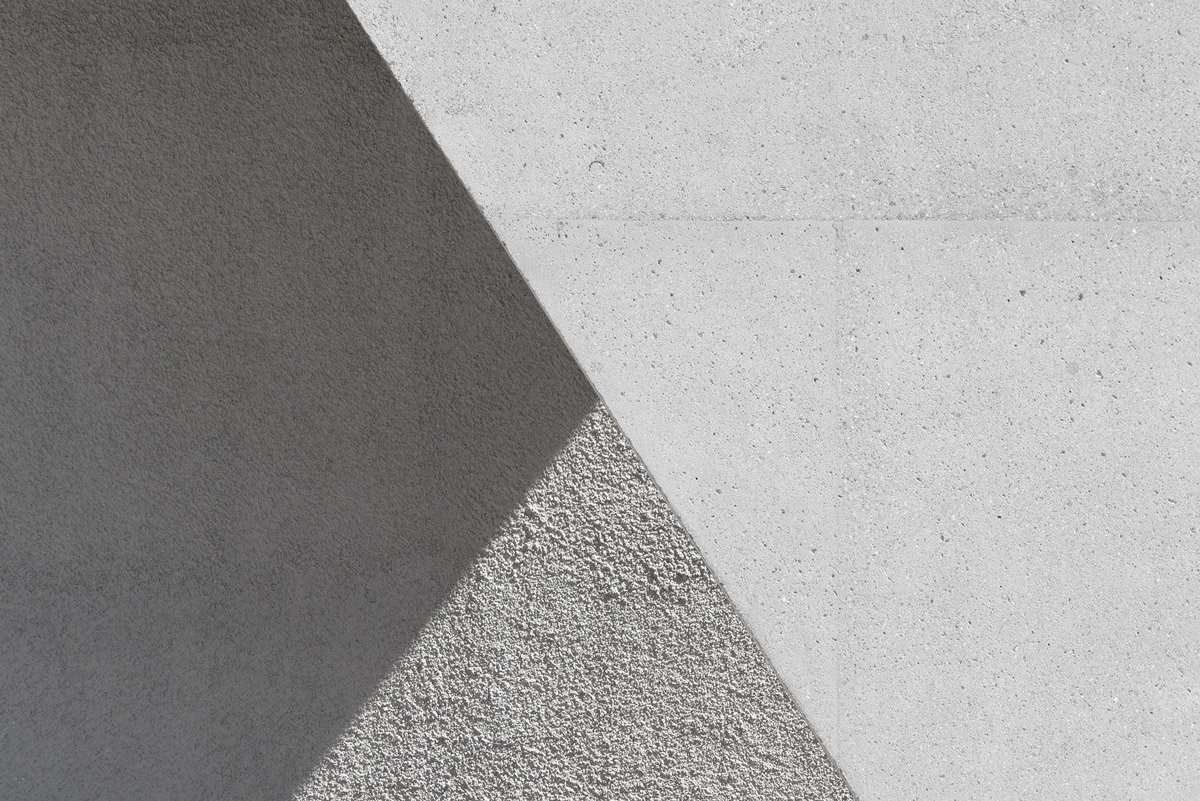
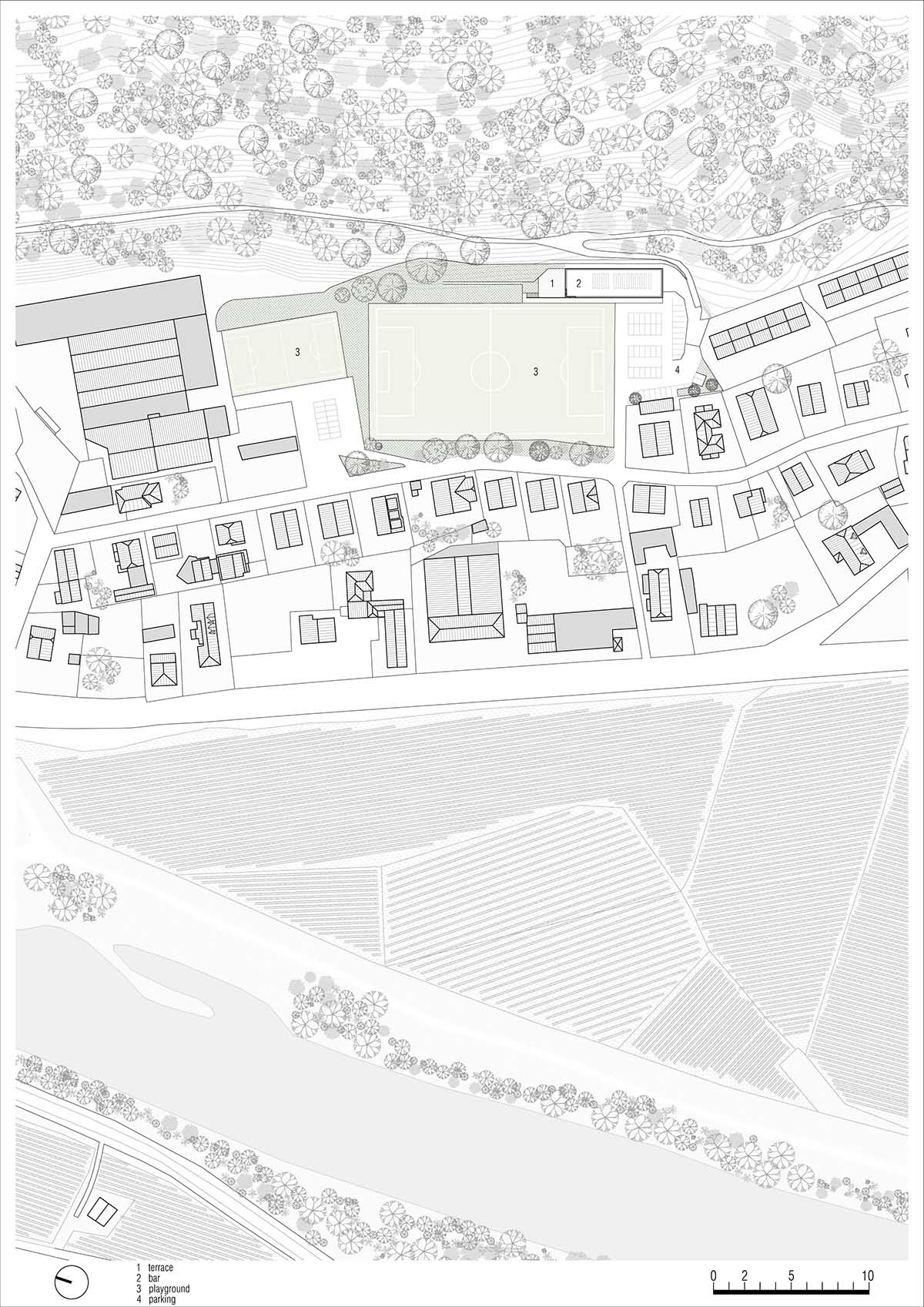
Site plan
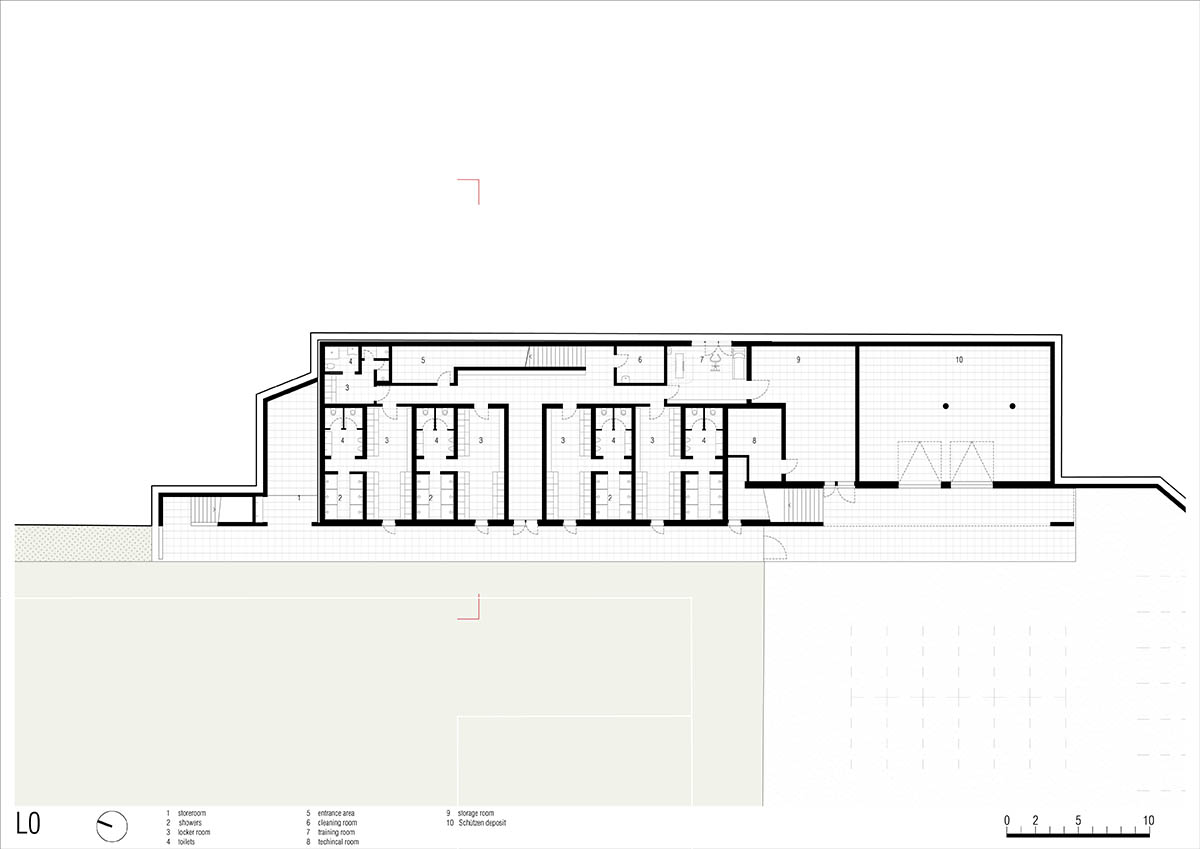
Ground floor plan
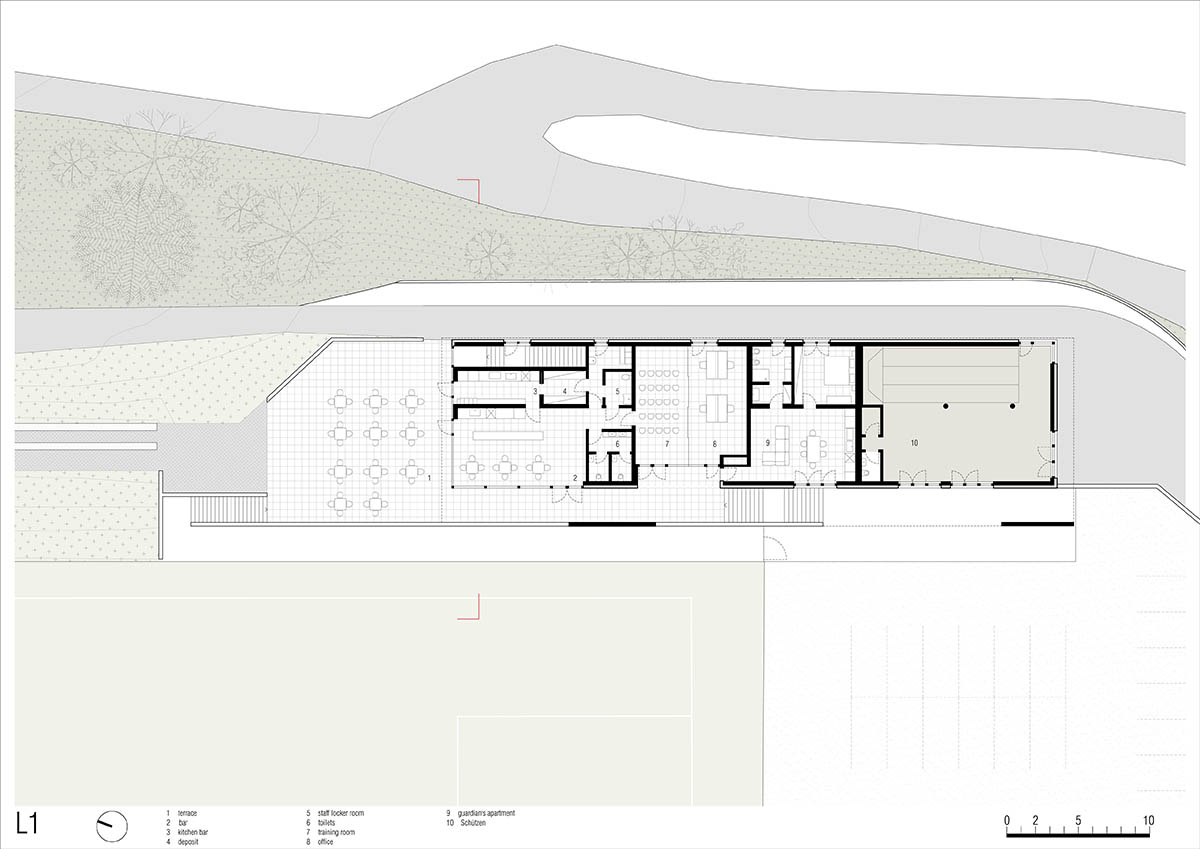
First floor plan
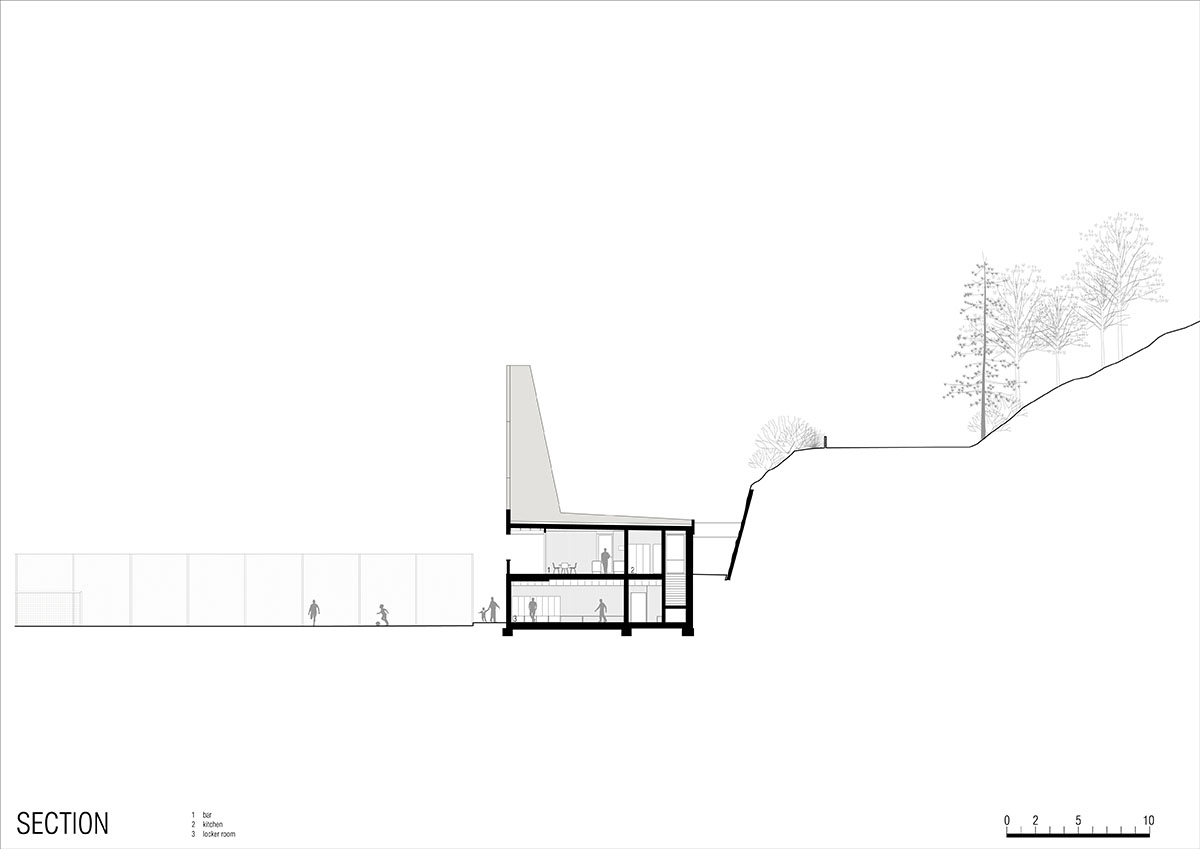
Cross section
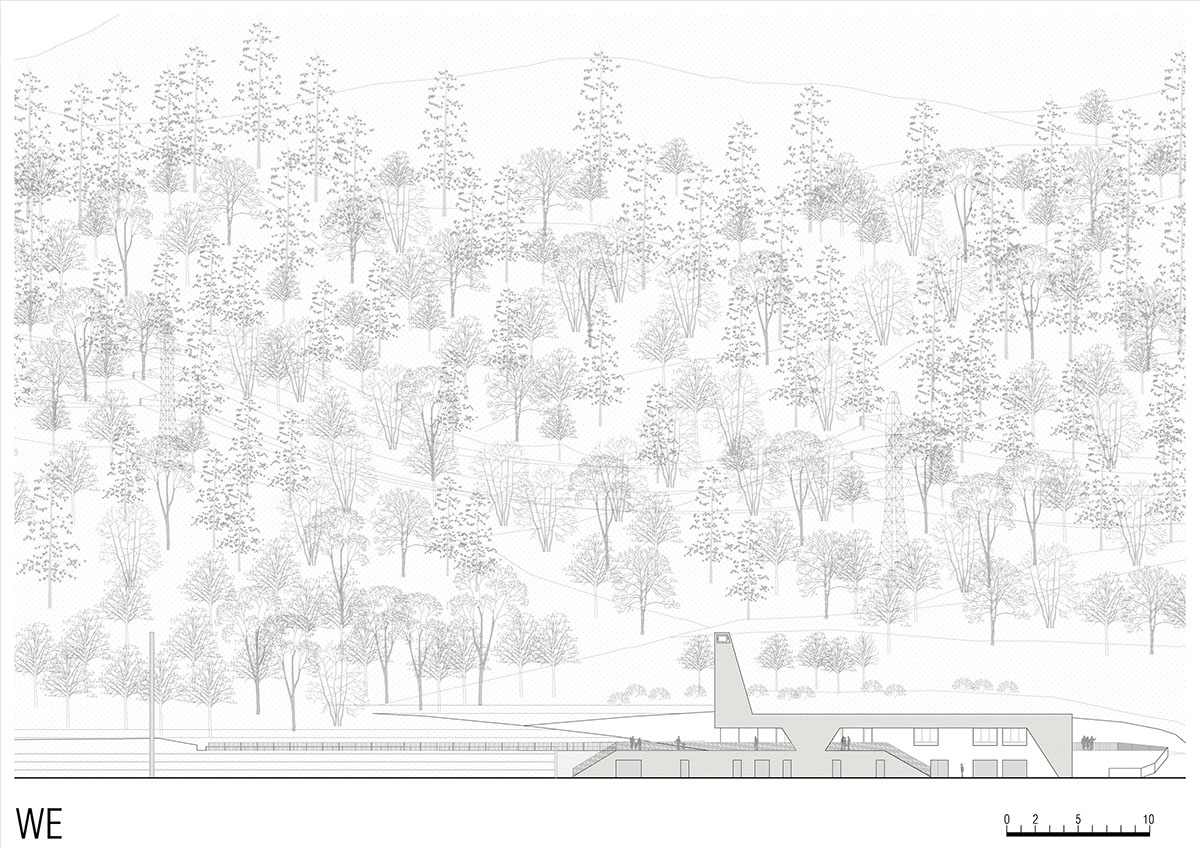
West elevation
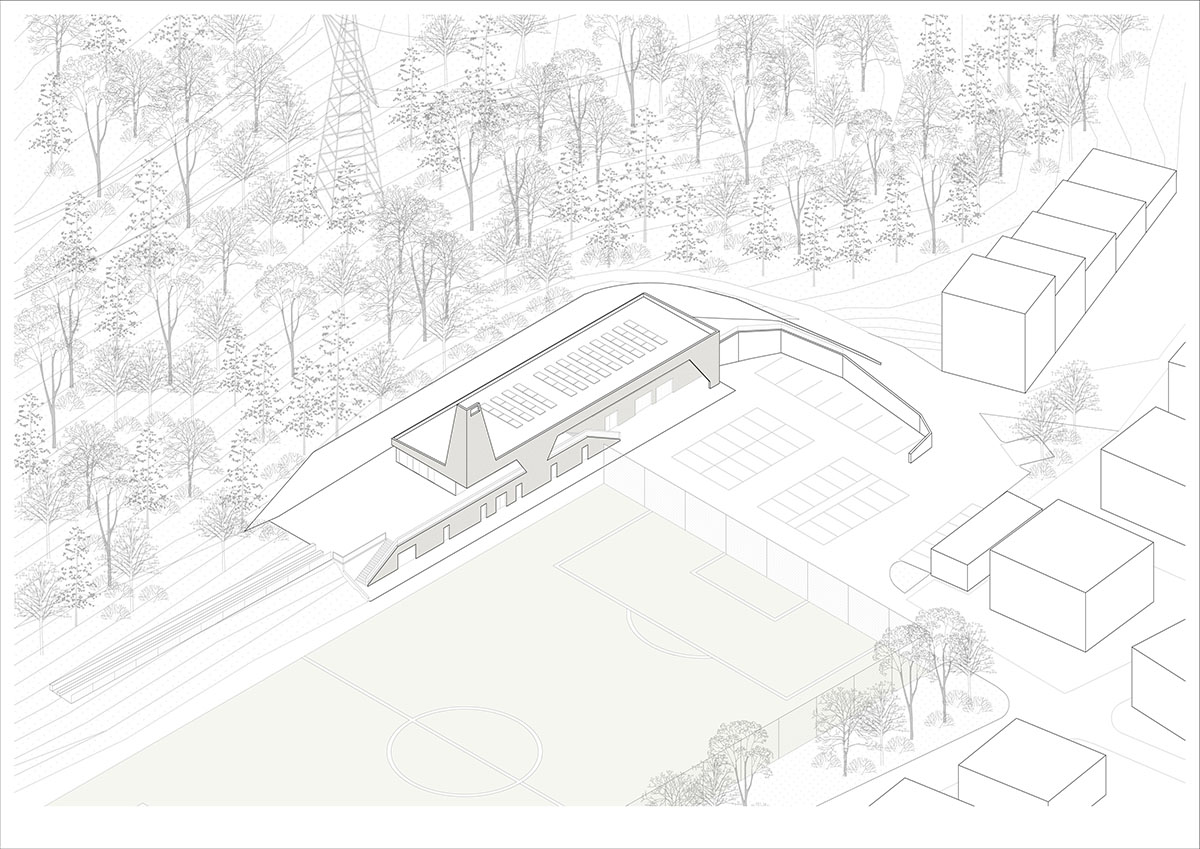
Axonometric drawing
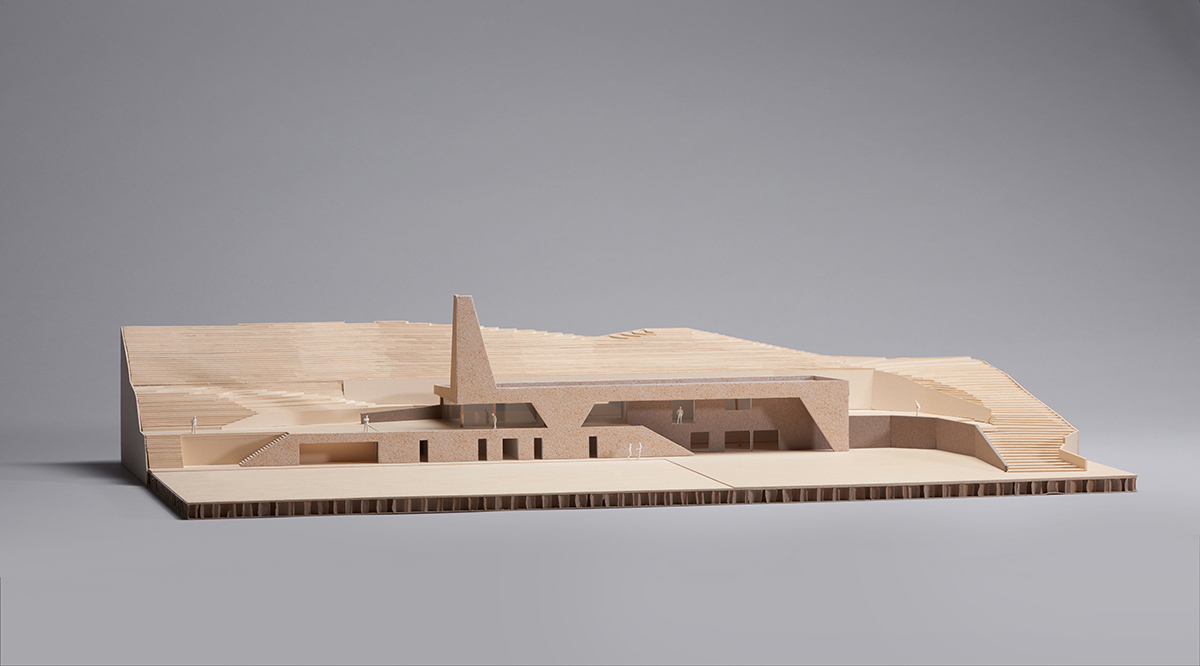
Image © Juergen Eheim
Model view
MoDusArchitects renovated the Novacella Abbey Museum complex with artistic interventions in Vahrn, Bolzano, Italy. The firm also completed the renovation of the Cusanus Academy in Bressanone, South Tyrol in Italy.
MoDusArchitects was founded by Sandy Attia and Matteo Scagnol in 2000.
The studio's projects emerge as "careful studies of the places and contexts within which they are situated to produce surprising architectural vocabularies thatcombine an approach that is both intuitive and grounded in thetectonics of the architectural discipline."
Project facts
Project name: Fieldhouse
Architects: MoDusArchitects (Sandy Attia, Matteo Scagnol)
Location: Via Cava 31, Laghetti (Egna), Bozen, Italy
Project team: Sandy Attia, Matteo Scagnol, Anna Valandro
Client: Comune di Egna
Size: 1.080 sqm (ground floor 650 sqm; first floor 430 sqm)
Design Phase: 2018—2022
Construction Phase: 2021—2022
Completion: November 2022
Contractor: Edil Vanzo Costruzioni Srl (Cavalese, TN)
Structural Engineering and Installations: 3M Engineering s.r.l.
All images © Gustav Willeit unless otherwise stated.
All drawings © MoDusArchitects.
> via MoDusArchitects
MoDusArchitects sports building sports center sports facility
